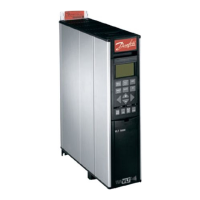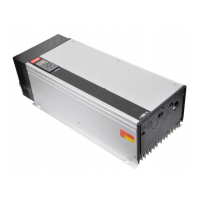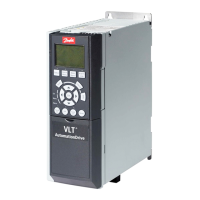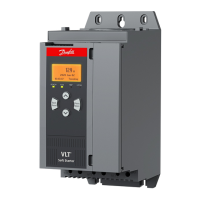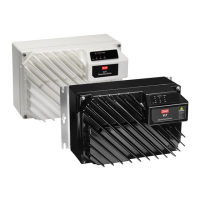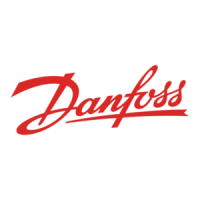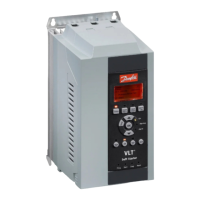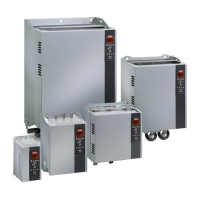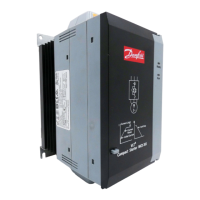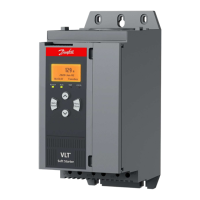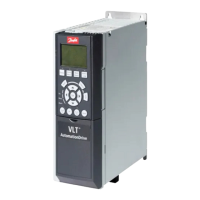Minimum
[3] sets up the PID Controller to
compare Feedback 1, Feedback 2 and Feed-
back 3 and use the lowest value as the feed-
back.
NB!
Any unused feedbacks must be
set to
No Function
in par. 20-00,
20-03, or 20-06. Only setpoint 1
will be used. The sum of Set-
point 1 and any other references
that are enabled (see par. group
3-1*) will be used as the PID
Controller’s setpoint reference.
Maximum
[4] sets up the PID Controller to
compare Feedback 1, Feedback 2 and Feed-
back 3 and use the highest value as the feed-
back.
NB!
Any unused feedbacks must be
set to
No Function
in par. 20-00,
20-03, or 20-06.
Only Setpoint 1 will be used. The sum of Set-
point 1 and any other references that are
enabled (see par. group 3-1*) will be used as
the PID Controller’s setpoint reference.
Multi-setpoint minimum
[5] sets up the PID
Controller to calculate the difference between
Feedback 1 and Setpoint 1, Feedback 2 and
Setpoint 2, and Feedback 3 and Setpoint 3. It
will use the feedback/setpoint pair in which
the feedback is the farthest below its corre-
sponding setpoint reference. If all feedback
signals are above their corresponding set-
points, the PID Controller will use the feed-
back/setpoint pair in which the difference
between the feedback and setpoint is the
least.
NB!
If only two feedback signals are
used, the feedback that is not to
be used must be set to
No Func-
tion
in par. 20-00, 20-03 or
20-06. Note that each setpoint
reference will be the sum of its
respective parameter value
(20-11, 20-12 and 20-13) and
any other references that are
enabled (see par. group 3-1*).
Multi-setpoint maximum
[6] sets up the PID
Controller to calculate the difference between
Feedback 1 and Setpoint 1, Feedback 2 and
Setpoint 2, and Feedback 3 and Setpoint 3. It
will use the feedback/setpoint pair in which
the feedback is farthest above its correspond-
ing setpoint reference. If all feedback signals
are below their corresponding setpoints, the
PID Controller will use the feedback/setpoint
pair in which the difference between the feed-
back and the setpoint reference is the least.
NB!
If only two feedback signals are
used, the feedback that is not to
be used must be set to
No Func-
tion
in par. 20-00, 20-03 or
20-06. Note that each setpoint
reference will be the sum of its
respective parameter value
(20-21, 20-22 and 20-23) and
any other references that are
enabled (see par. group 3-1*).
20-21 Setpoint 1
Value:
Ref
MIN
par.3-02 - Ref
MAX
par.
3-03 UNIT (from par. 20-12)
0.000
Function:
Setpoint 1 is used in Closed Loop Mode to en-
ter a setpoint reference that is used by the
frequency converter’s PID Controller. See the
description of
Feedback Function
, par. 20-20.
NB!
Setpoint reference entered here
is added to any other references
that are enabled (see par. group
3-1*).
20-22 Setpoint 2
Value:
Ref
MIN
- Ref
MAX
UNIT (from par.
20-12)
0.000
Function:
Setpoint 2 is used in Closed Loop Mode to en-
ter a setpoint reference that may be used by
the frequency converter’s PID Controller. See
the description of
Feedback Function
, par.
20-20.
NB!
The setpoint reference entered
here is added to any other ref-
6. How to programme the frequency converter VLT
®
HVAC Drive Operating Instructions
80
MG.11.A4.02 - 09.10.06. VLT
®
is a registered Danfoss trademark
6
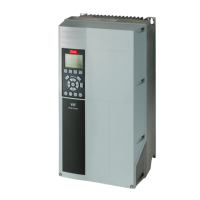
